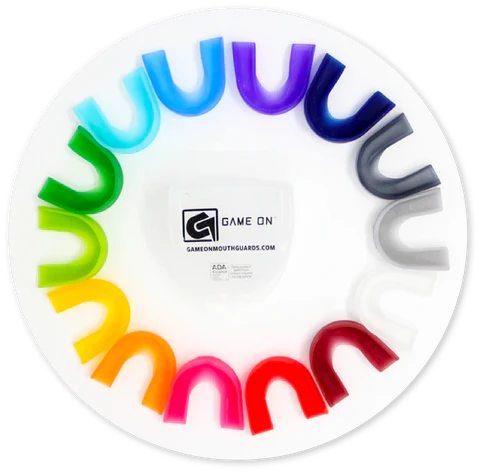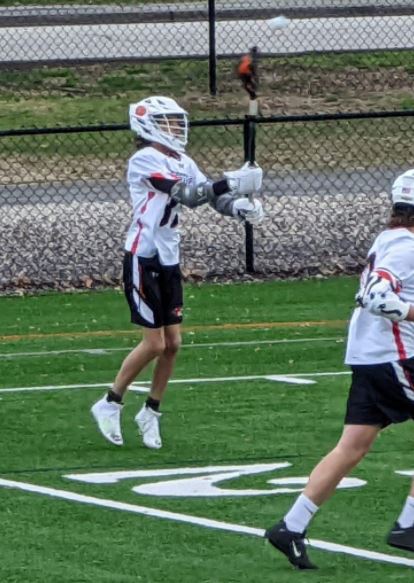Save a Tooth; Wear a Mouthguard
05.29.25 - Pediatric Dentistry News
Save a Tooth; Wear a Mouthguard
During Contact Sporting Events
A mouthguard is a tough device placed inside the mouth to reduce mouth, and teeth injuries, as well as injures to the surrounding structures. Wearing a mouthguard during contact sports is crucial to the overall health and well being of athletes oral facial area.

There are certain contact sports with a higher risk of dental injury. Basketball, soccer, football, hockey, baseball/ softball, lacrosse, martial arts, and boxing. There are also cases where dental injuries can occur outside of sports including but not limited to falling, fights, and accidents of any kind.

Athletic mouthguards are necessary in order to limit dental injuries while participating in contact sports. 75% percent of oral-facial injuries occur while athletes are not wearing mouthguard protection.
Dental Injuries that can occur from NOT wearing a mouthguard
Crown Fractures: The most common dental related injury during contact sports. Crown fractures are complete or partial loss of the clinical portions of a tooth. This type of dental injury is caused by a force hitting the tooth. On the field you will notice that the crown of the tooth is broken off or the tooth will be completely missing.
Cold compresses can be applied to the outside area to reduce swelling due to soft tissue injury. Try to find the broken piece, keep it moist using a paper towel and a little water and place it in a plastic bag. Treatment may consist of:
- Your dentist will likely take an X-ray to determine the treatment necessary.
- Minor tooth fracture- it can be filed down (non-emergency)
- Moderate tooth fracture- filling or bonding of composite material (contact your dentist immediately)
- Deep tooth fracture- possible root canal (contact your dentist immediately)
Tooth Intrusion: Intrusion is is when the tooth is pushed up into the bone the tooth sits in. During sport activities this usually occurs when there is a great enough impact to force a tooth up into the bone. Treatment may consist of: (seek dental treatment immediately)
- Your dentist will likely take an X-ray to determine the treatment necessary.
- Repositioning of the tooth
- Splinting
- Orthodontia
- Worst case scenarios: dental surgery
Tooth Extrusion– When Extrusion is seen as a sports related injury the tooth appears to be longer than its neighboring teeth and/or you are able to move the tooth. Treatment may consist of: (seek dental treatment immediately)
Place the tooth into its original position, apply pressure immediately so a a clot will form and hold the tooth still until you reach your dentist.
- Your dentist will likely take an X-ray to determine the treatment necessary.
- repositioning of the tooth
- Splinting
- Orthodontia
Tooth Avulsion– the complete loss of a tooth from its socket. When seen as a sports injury the tooth is completely missing or “knocked out”.
- Permanent tooth- Recover the tooth, making sure to hold it by the crown (top) and not the root end. Rinse, but do not clean or handle the tooth more than necessary. Reinsert the tooth in the socket and hold it in place using a clean piece of gauze or cloth. If the tooth cannot be reinserted, carry it in a cup containing cold milk or saliva, not water. Because time is essential, please call the office as soon as possible.
- Primary “baby” tooth- it is recommend to leave the tooth out. If primary teeth are placed back into its socket it can cause permanent damage to the permanent teeth.
Treatment may consist of: (seek dental treatment immediately)
- Your dentist will likely take an X-ray to determine the treatment necessary.
- Repositioning of the tooth
- Splinting
- Orthodontia
- Worst case: possible root canal
Tempromandibular Joint Dislocation– are very common sports injuries. This injury typically occurs after falling on one’s face, a ball strike to the face at a fast rate of speed, or any type of direct impact to the face. Symptoms consist of pain in the jaw, lock jaw, and clicking an popping, and limited jaw function. Treatment may consist of: (depending on severity- seek treatment immediately)
- Physical therapy
- Rest
- Surgery
- Possible broken jaw- you can gently tie the mouth close with a towel or tie. You can also support the jaw with your hands. Go to an emergency room immediately.

